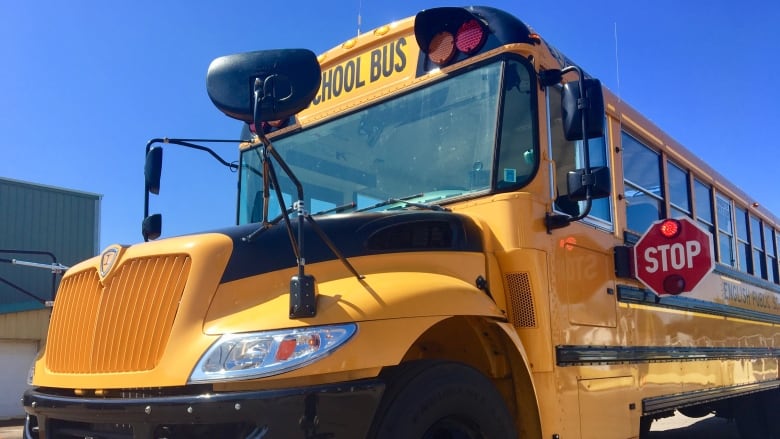Sudbury, British Columbia to pilot school bus seat belt project
3 buses will be outfitted with over-the-shoulder belt straps

Sudbury school buses could be some of the first on the road with safety belts.
Marc Garneau, Canada's Minister of Transport, announced that two communities will host a pilot project where buses are equipped with belts for student safety. The other district will be named later, but is expected to be in British Columbia, the minister said.
The need for pilot projects stems from the report of the Task Force on School Bus Safety, Strengthening School Bus Safety in Canada.
"The task force report confirms that seatbelts can provide an additional layer of safety on school buses in rare but serious school bus collisions," Garneau said. "The findings also highlight the need to further study some important practical aspects such as proper seat adjustment."
"The one year pilots will serve to validate the task force's guidelines for the use of seat belts and assess whether the safety measures can eventually become viable in Canada."
According to a press release from the ministry, the project will involve a limited number of new school buses equipped with three-point seatbelts
Garneau said that the pilot project will examine "all necessary procedures and implications associated with wearing a three point seat belt."
"Recognizing that children come in all sizes and all ages, not to mention different clothing in summer and winter...this has to be assessed since it's one thing to install seat belts, if they are installed they must be installed properly."
The ministry also said that the Sudbury Student Services Consortium expressed interest in the pilot project. Renée Boucher, executive director of the consortium, said that three buses will be outfitted with the shoulder and lap belts.
"There will be the use of seat belts on a 72-passenger school bus," Boucher said. "So currently the Sudbury Student Services Consortium already has seat belts and integrated seats on some of our wheelchair buses, the smaller units."
The task force report also recognized that the consortium has used seatbelts on some of their buses, and was interested in consulting their findings.
Boucher said when they began using the belts with their special needs students, attaching them became "second nature."
"They've been buckling up for forever in their parents' vehicles and coming into the buses and seeing the seat belts. It was easy for them. It was very smooth," Boucher said. "We did not have any issues. So we are hoping that this pilot project will show the same experience."
Boucher said there are still additional details to be worked out, like evacuation training for monitors and drivers, and communicating with parents.